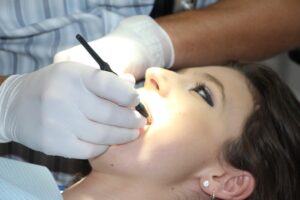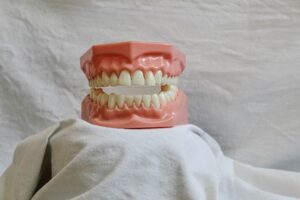Excessive jaw recession, often characterized by an unbalanced chin and pronounced overbite, not only affects facial harmony but also leads to functional difficulties. Orthognathic surgery emerges as the optimal solution for correcting mandibular or maxillary recession, restoring both aesthetics and functionality.
Detecting Excessive Jaw or Maxillary Recession
Excessive recession of the mandible, known as mandibular retrognathia, occurs when the lower jaw is positioned further back than normal, resulting in facial disproportion and bite irregularities. Conversely, exaggerated maxillary recession, or prognathism, involves the upper jaw positioned too far back, leading to dental misalignment and breathing challenges. These conditions may arise from genetic factors, trauma, developmental disorders, or a combination thereof, often manifesting as dental malocclusions and aesthetic imbalances.
Seeking evaluation by a maxillofacial surgeon is essential for accurate diagnosis and personalized treatment planning. Clinical and radiographic assessments are conducted to determine the extent of the condition and tailor the intervention accordingly.
Pre-operative, Intra-operative, and Post-operative Phases
Orthognathic surgery stands as the primary treatment for correcting excessive jaw or maxillary recession. This surgical procedure involves repositioning the affected jaw or maxilla to restore proper facial alignment and function.
Before surgery, a comprehensive evaluation, including facial, dental, and radiographic analyses, is conducted to formulate a precise surgical plan. During the procedure, meticulous osteotomies are performed, guided by the pre-established plan, to reposition the jaw bones accurately. Titanium plates and screws are utilized to secure the bones in their new alignment.
For cases involving single bone correction, such as mandibular recession, mono maxillary surgery may suffice. Conversely, complex cases necessitating correction of both the mandible and maxilla typically require bimaxillary orthognathic surgery. This comprehensive approach addresses functional and aesthetic concerns, facilitating improved chewing function, temporomandibular joint stability, and facial harmony.
Postoperatively, a structured recovery period is implemented, ensuring close monitoring of tissue healing and adaptation to the new jaw position.
Conclusion
At Birbe Clinic, we specialize in maxillofacial surgery and offer expert care for correcting excessive jaw or maxillary recession. If you seek to address jaw or maxillary backward movement, we are here to assist you. For inquiries or appointments, please contact us at +34 932 124 737, via WhatsApp at +34 626 852 363, or email us at clinica@birbe.org.
More information: Instructions for before and after jaw surgery
Article written by the Birbe Editorial Committee



